Finlay Carbonate Bank Facies and Fossils,
Albian of Southwestern Texas
Cretaceous outcrops just south of Cornudas, TX. Stops 3 and 4 have exposures of the Finlay Formation and Cox Sandstone. The Finlay limestone is very fossiliferous, containing a high diversity of marine invertebrate fossils, mostly as casts but with some shell material preserved, especially in the oysters.
K = undifferentiated Cretaceous
Kf = Finlay Formation
Kcx = Cox Sandstone
Kcg = Campagrande
Qal = Quaternary alluvium
Stop 3 outcrop along State Route 2317, showing heavily burrowed carbonate mudstone overlain by more massive limestone, containing fewer burrows. Turritella, gastropod, and oyster fossils are common.
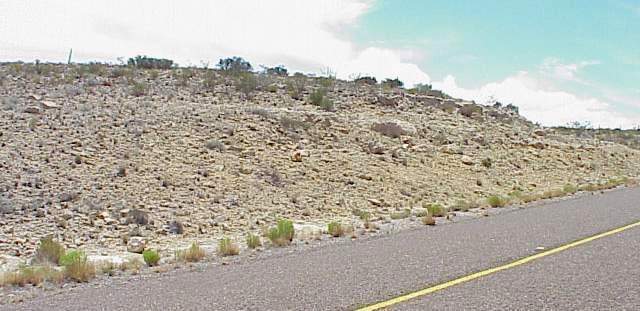
Above: Finlay limestone along State Route 2317, east side of road at hill crest.
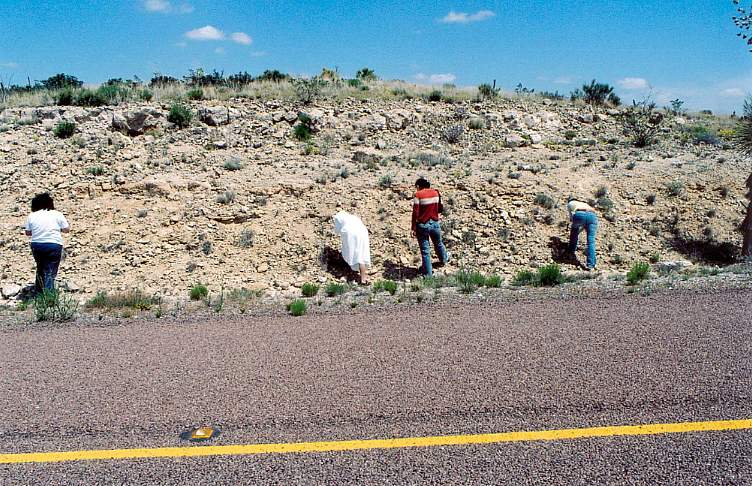
Above: EPCC Historical Geology class (Spring 2005) looking for fossils along the outcrop.
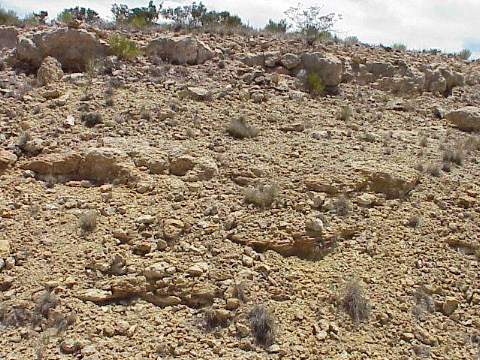
Above: Close-up of outcrop.
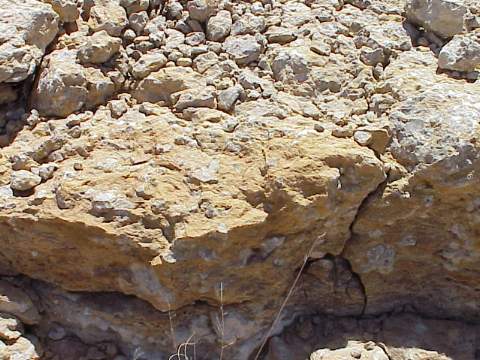
Above: Close-up of burrowed brown carbonaceous siltstone (mudstone). Burrows tend to be filled with a lighter-colored carbonate, making them stand out in a brown-colored carbonaceous siltstone matrix.
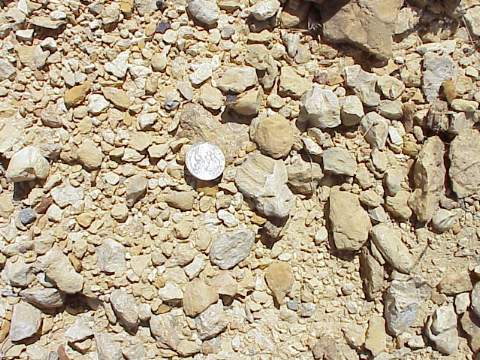
Above: The burrowed mudstone tends to weather faster than the more massive limestone, shedding its fossils on the outcrop slope.
Stop 4 at bend in road, south of Stop 3. This facies is the same as that exposed at Stop 3, but is thicker with fewer burrows in the lower part and little or no burrows in the upper part (similar to that at Stop 3). It contains numerous diverse invertebrate fossils in a more nodular limestone.
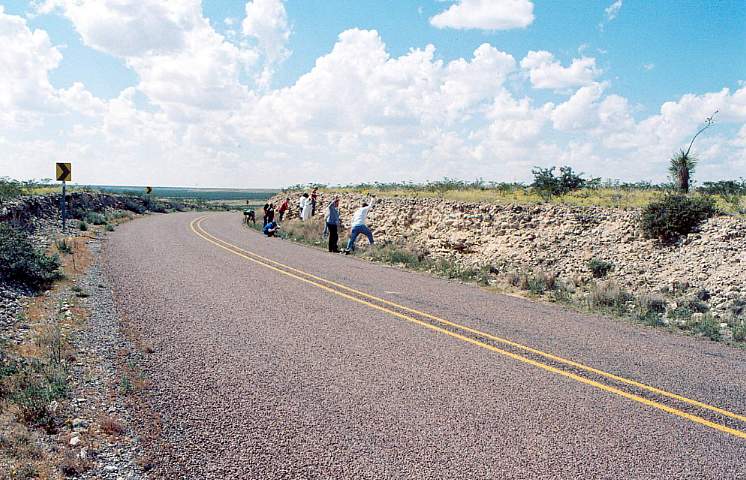
Above: Finlay limestone at bend in State Route 2317, looking west. Outcrop on north side of road is less weathered and contains better-preserved fossils. EPCC Historical Geology class (Spring 2005) collecting fossils.
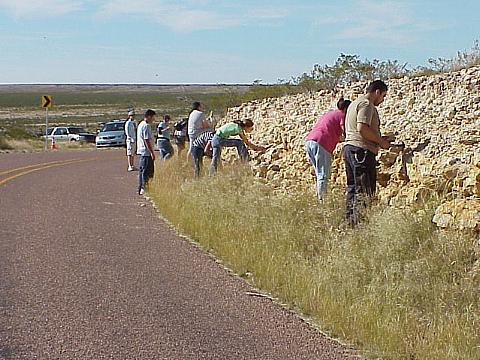
Above: Same outcrop as above. EPCC Historical Geology class (Fall 2005) collecting fossils.
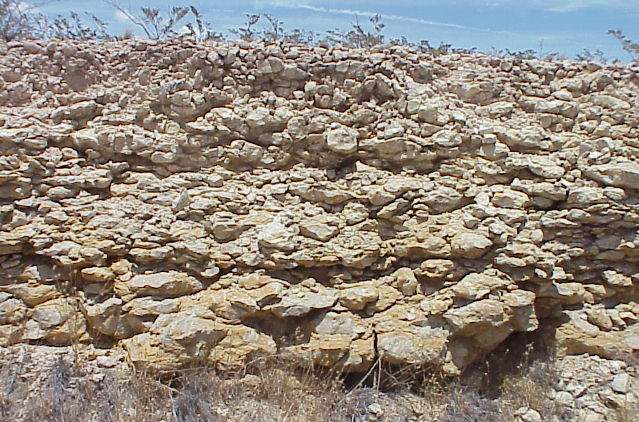
Close-up of outcrop at Stop 4.
Fossil Invertebrates
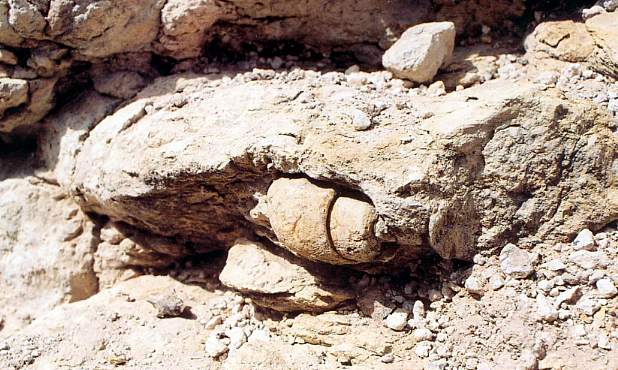
Above: in situ gastropod fossil: Cerithium bosquense (Lower Cretaceous).
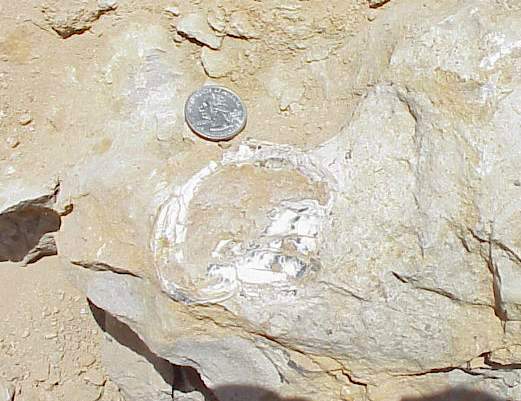
Above: in situ oyster fossil: Texigryphea washitaensis (Lower Cretaceous oyster).
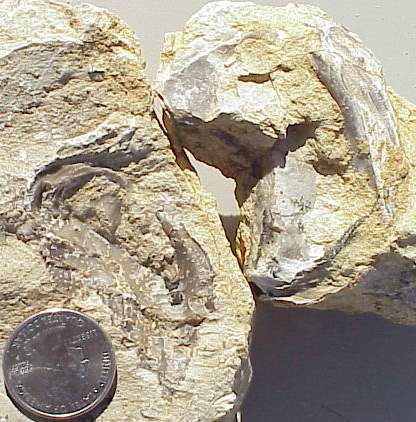
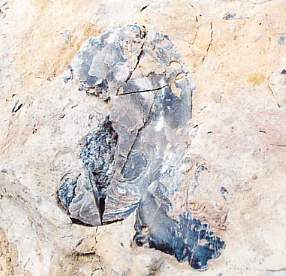
Above: Crassostrea sp. (Lower Cretaceous to Recent oyster).
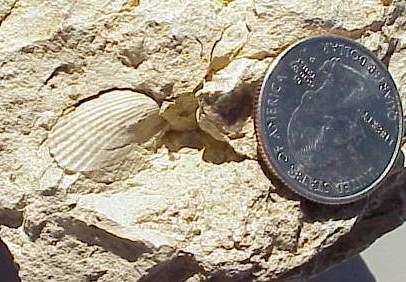
Above: Venericardia sp. (Cretaceous to Recent bivalve).
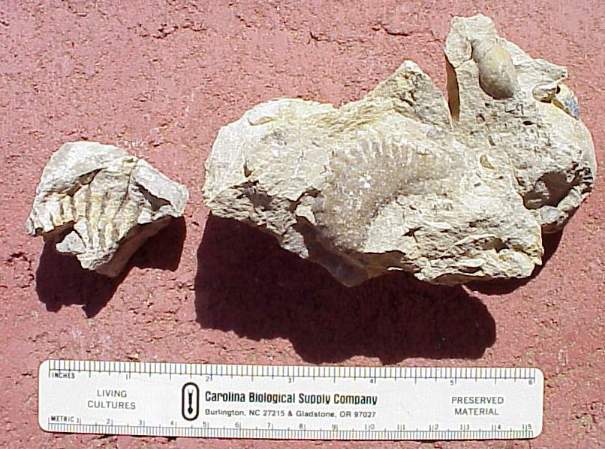
Above: Pterotrigonia guadalupe (Lower Cretaceous bivalve).
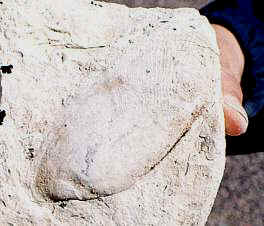
Above: Homomya sp. (Lower Cretaceous bivalve).
Above: Tylostoma tumidum on left & top, and Turritella sp. on right (Lower Cretaceous gastropods).
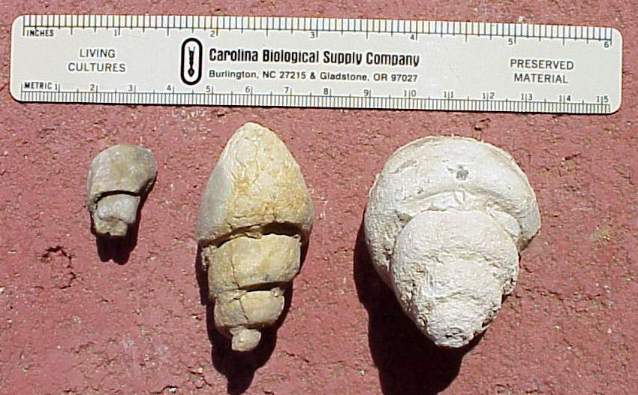
Above: On left Cerithium bosquense; on far right Tylostoma tumidum (Lower Cretaceous gastropods).
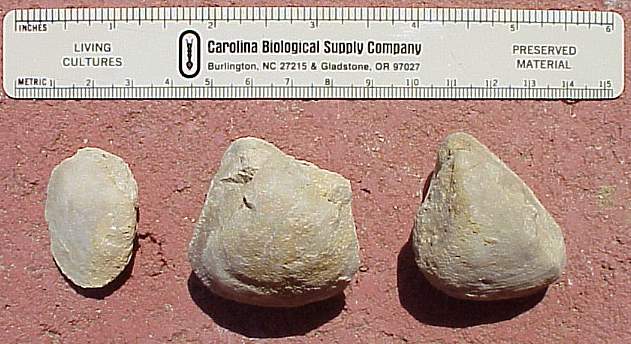
Above: Tapes decepta on left and Protocardia texana on right (Lower Cretaceous bivalves).
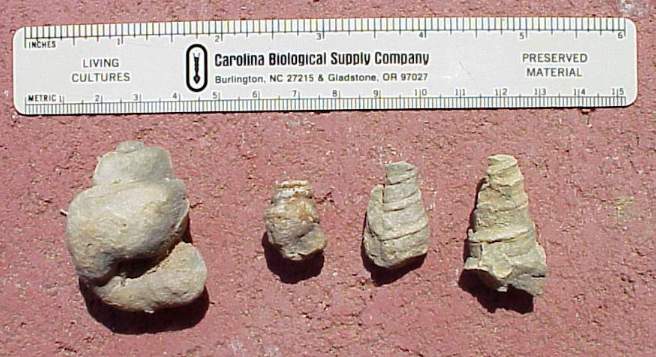
Above: Tylostoma tumidum on left and Turritella sp. on right (Lower Cretaceous gastropods).
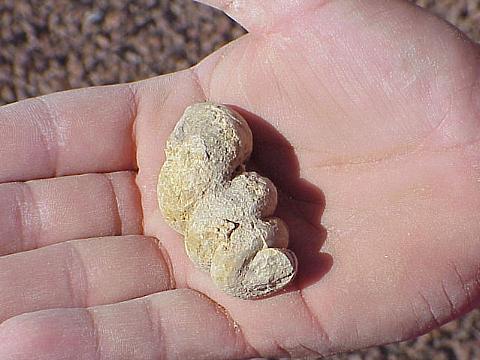
Above: Spiral gastropod (Tylostoma).
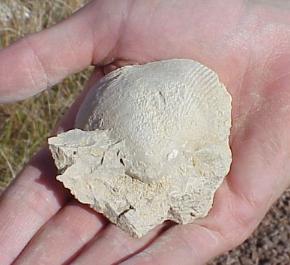
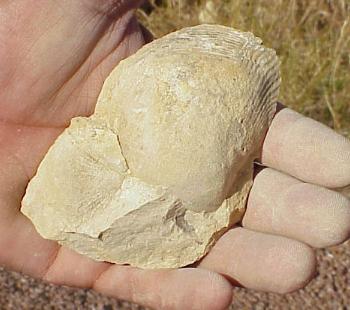
Above: Pelecypods with cross ribbing.
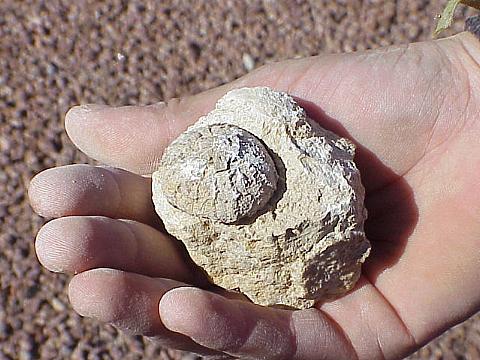
Above: Echinoderm, first specimen found in November 2005.
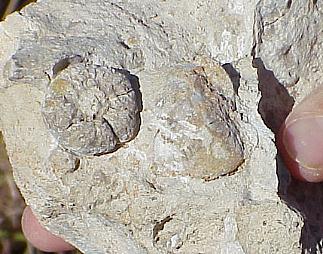
Above: Echinoderm (underside showing round central opening), second specimen found in November 2005 (next to a Protocardia pelecypod).
This page was first created by Bruce Cornet on 2 May 2005.
This page was modified on 11/11/2005.